Fresh cat food has become a popular choice for pet parents, but the average cost ranges from $3 to $8 per day, making it significantly more expensive than traditional kibble. If you’re wondering whether premium fresh meals are worth the investment for your feline friend, you’re not alone in questioning the price tag.
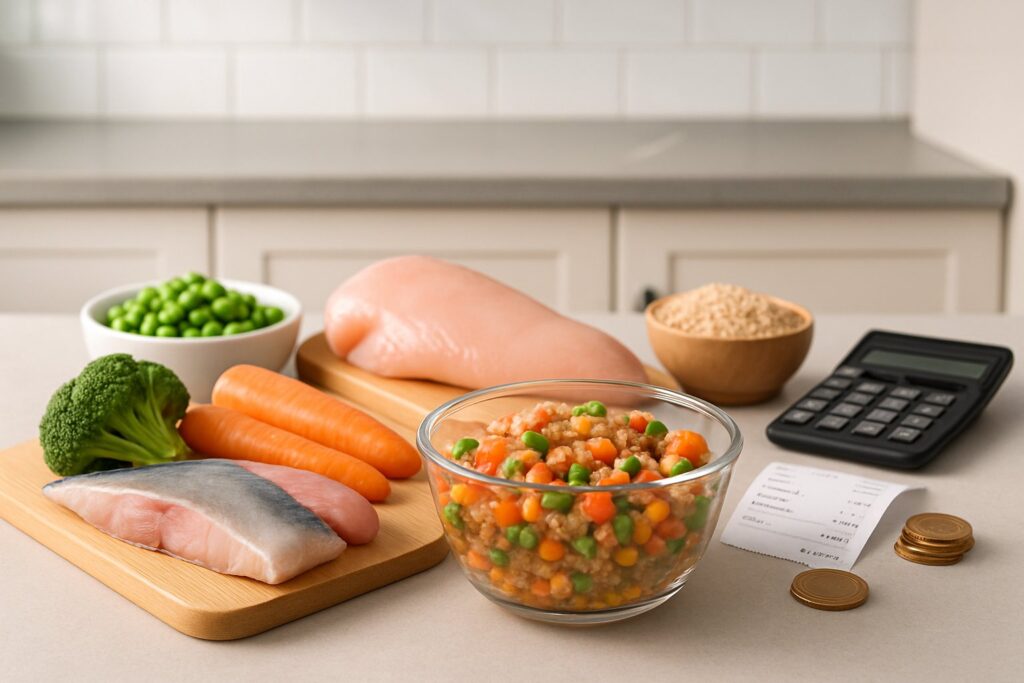
Table of Contents
I’ve spent countless hours researching fresh cat food options, and let me tell you – the pricing can be shocking at first glance. Studies show that homemade diets tend to cost more than commercial dry food, and fresh commercial options often fall into a similar price range. But here’s what most cat parents don’t realize: the cost per serving isn’t the whole story.
You’re about to discover exactly what drives these prices up, which brands offer the best value, and how to make fresh feeding work within your budget. I’ll break down the real costs, compare top brands, and share strategies that can help you provide quality nutrition without breaking the bank.
Key Takeaways
- Fresh cat food typically costs $3-8 daily compared to $0.50-2 for traditional kibble
- Brand reputation, ingredient quality, and packaging methods significantly impact pricing
- Value extends beyond cost when considering nutrition density and potential health benefits
How Much Does Fresh Cat Food Really Cost?
Fresh cat food typically costs $3-8 per day, making it significantly more expensive than traditional options. The price depends on your cat’s size, the brand you choose, and whether you buy individual meals or subscribe to fresh cat food delivery services.
Typical Price Ranges Per Meal and Per Month
Let me break down what you’ll actually spend on fresh cat food cost.
Per Meal Costs:
- Budget fresh brands: $1.50-2.50 per meal
- Premium fresh brands: $3.00-5.00 per meal
- Ultra-premium options: $4.00-8.00 per meal
For a typical 10-pound cat eating twice daily, I’ve found monthly costs range dramatically:
| Brand Type | Daily Cost | Monthly Cost |
|---|---|---|
| Budget Fresh | $3.00-5.00 | $90-150 |
| Premium Fresh | $6.00-10.00 | $180-300 |
| Ultra-Premium | $8.00-16.00 | $240-480 |
Most cat owners I know spend around $200-250 monthly on fresh cat food. That’s roughly 6-8 times more than dry food costs.
Subscription services often offer 10-20% discounts, but shipping adds $10-15 weekly. If you’re feeding multiple cats, some brands provide bulk discounts starting at 15% off.
What Influences the Cost of Fresh Cat Food?
Several factors drive up fresh cat food costs compared to traditional options.
Ingredient Quality makes the biggest difference. Fresh foods using human-grade meats, organic vegetables, and premium proteins cost significantly more than conventional cat food ingredients.
Production Methods impact pricing heavily. Small-batch cooking, flash-freezing, and cold-chain shipping require expensive equipment and processes. Unlike dry kibble made in massive facilities, fresh food production stays limited.
Packaging and Delivery add substantial costs. Individual meal portioning, refrigerated trucks, and overnight shipping can double the base food price. I’ve noticed delivery fees alone range from $15-30 per shipment.
Brand Positioning also matters. Premium brands charge 50-100% more than budget options, even with similar ingredients. Marketing, veterinary endorsements, and fancy packaging drive up cat food costs.
Your Cat’s Size directly affects spending. Large cats need 1.5-2 times more food than average cats, significantly increasing monthly expenses.
Comparing the Cost to Dry, Wet, and Raw Cat Food
Here’s how fresh cat food stacks up against other options:
Dry Cat Food: $0.50-1.50 daily ($15-45 monthly)
Fresh costs 5-10 times more than dry kibble. However, dry cat food outsells wet food mainly due to price differences.
Wet Cat Food: $1.50-3.00 daily ($45-90 monthly)
Canned cat food costs roughly half what fresh food costs. Premium wet foods approach fresh pricing but lack the same nutritional freshness.
Raw Cat Food: $2.50-6.00 daily ($75-180 monthly)
Raw diets cost slightly less than fresh but require more preparation time. Raw food contamination risks were found in 47 cats, making fresh options safer.
Commercial vs. Homemade Fresh: Making fresh food yourself costs $1.50-3.00 daily but requires significant time investment. Store-bought fresh eliminates prep work but doubles the expense.
The price gap narrows when you factor in potential vet bills from poor nutrition, though higher prices don’t guarantee better quality.
Types of Fresh Cat Food and Their Impact on Price
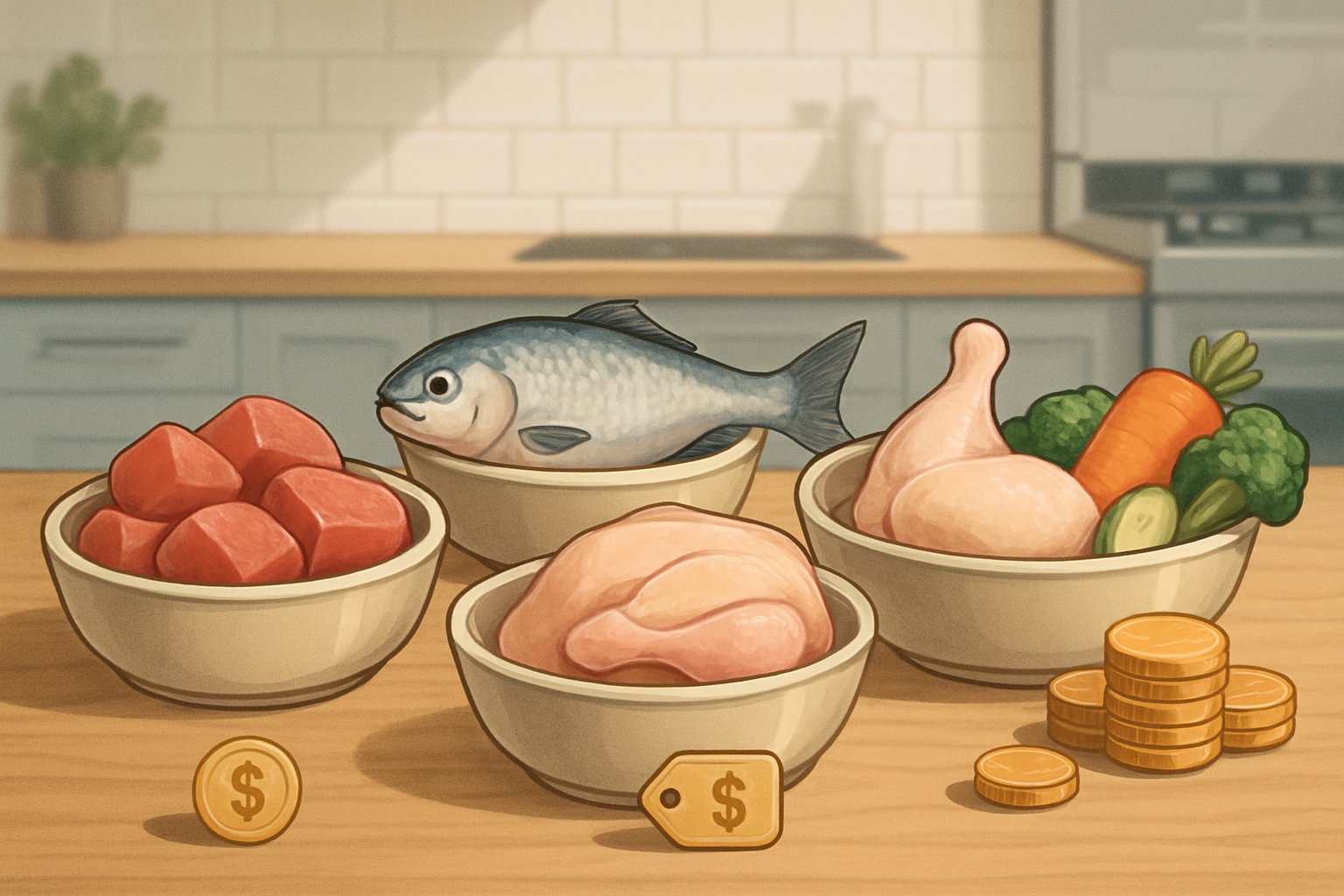
Different fresh cat food types come with wildly different price tags. Subscription services typically cost more than store brands, while bulk purchases can slash your monthly bills by 30% or more.
Subscription Delivery vs. In-Store Options
I’ve noticed fresh cat food delivery services like Smalls and Nom Nom charge premium prices for convenience. These cat food delivery services typically run $3-8 per day for an average cat.
Fresh cat food delivery offers perks that justify higher costs:
- Custom portioning based on your cat’s weight
- Veterinary formulation
- Regular delivery schedules
- Premium ingredients sourced specifically for pet nutrition
In-store fresh options cost significantly less. I’ve found brands like Freshpet at grocery stores for $2-4 per package. These premium cat food brands sacrifice some customization for affordability.
The convenience factor drives subscription pricing up by 40-60%. But you’re paying for expertise – many delivery services employ veterinary nutritionists to formulate recipes.
Single-Serve, Bulk, and Custom Meal Plans
Single-serve fresh cat food costs the most per ounce. I typically see individual portions priced at $4-6 each for premium brands.
Bulk purchasing drops costs dramatically:
- 7-day meal packs: $25-35 per week
- 14-day plans: $45-65 (better value)
- Monthly subscriptions: $80-120 (best per-meal price)
Custom meal plans represent the highest-end option. These types of cat food factor in your cat’s age, activity level, and health conditions. Expect to pay $100-200 monthly for fully customized nutrition.
Cat food brands like Darwin’s and We Feed Raw offer bulk discounts up to 25% off single-serve prices. I recommend starting with smaller quantities to test your cat’s preferences before committing to bulk orders.
The sweet spot? Two-week meal plans give you flexibility without breaking the bank.
Top Fresh Cat Food Brands and Their Pricing
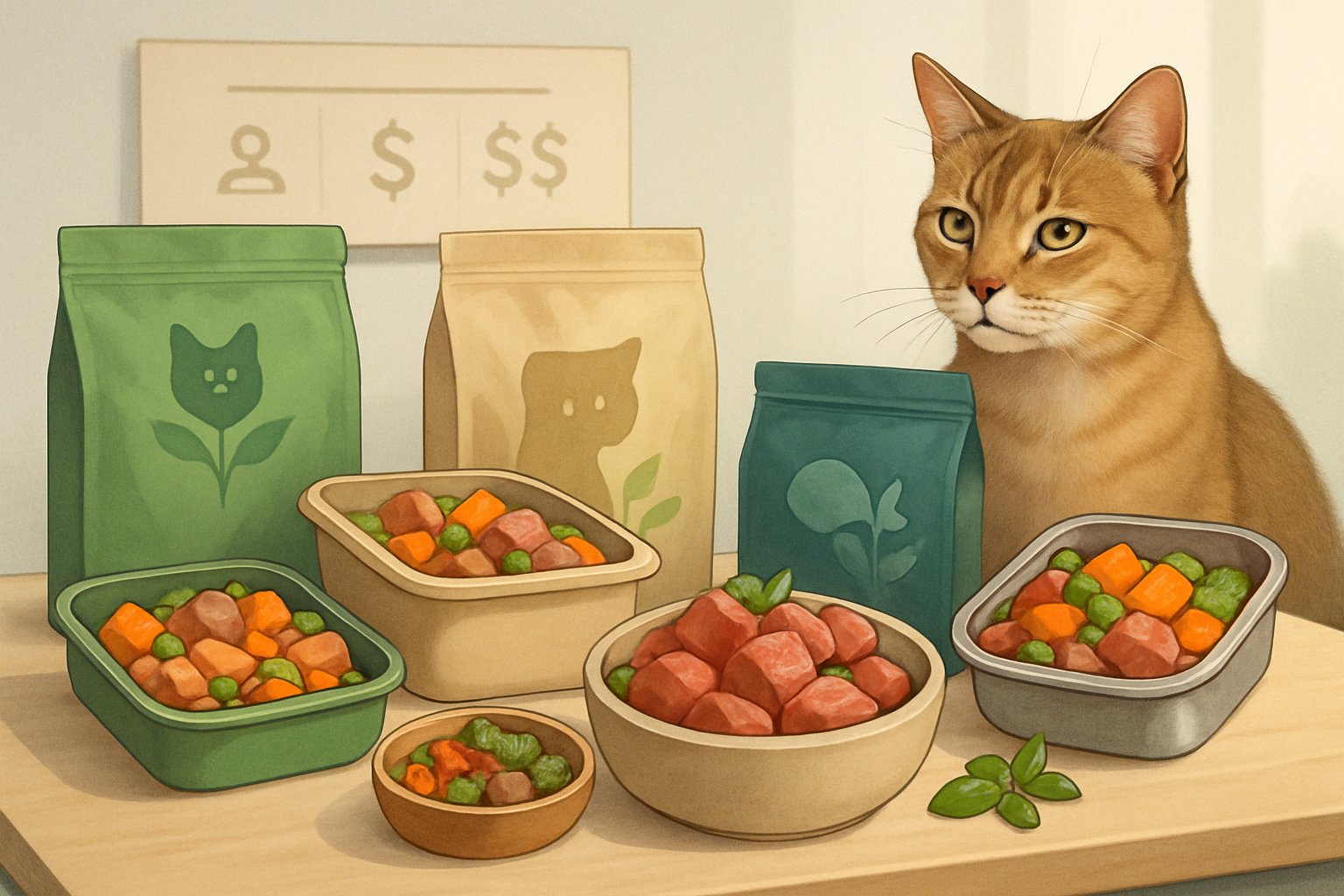
Fresh cat food brands typically range from $3 to $8 per day, with pricing influenced by ingredient quality, portion sizes, and subscription plans. Each brand offers different value propositions and pricing structures.
Nom Nom
I’ve found Nom Nom to be one of the pricier fresh cat food options, but their veterinary-formulated recipes justify the cost for many cat parents.
Their pricing starts around $4-6 per day for an average 10-pound cat. The exact cost depends on your cat’s age, weight, and activity level.
What sets Nom Nom apart is their personalized meal plans. You fill out a detailed questionnaire about your cat, and they create custom portions based on your pet’s specific needs.
Key Nom Nom pricing factors:
- Weekly delivery subscriptions offer better rates
- Larger cats naturally cost more to feed
- First-time customers often get 50% off their first order
The brand reputation among cat owners is solid. Many appreciate the transparent ingredient sourcing and the fact that recipes are developed by veterinary nutritionists.
Smalls
Smalls positions itself as the more affordable fresh option, and I’ve noticed their pricing reflects this approach.
You’re looking at roughly $3-5 per day for most cats. This makes them competitive with high-end kibble when you calculate daily feeding costs.
Their freeze-dried and fresh options give you flexibility in pricing. The freeze-dried versions cost less per serving and have longer shelf lives.
Smalls pricing highlights:
- Subscription discounts up to 20%
- Mix-and-match meal plans available
- No cancellation fees
I appreciate that Smalls doesn’t require long-term commitments. You can pause or adjust your subscription anytime, which helps manage costs during tight budget months.
The brand has built strong cat food brand reputation through human-grade ingredients and straightforward pricing without hidden fees.
Raised Right
Raised Right takes a different approach with their raw frozen meals, which impacts both pricing and storage requirements.
Expect to pay $5-8 per day depending on your cat’s size and the specific protein you choose. Their premium proteins like venison cost more than chicken or turkey.
The higher price point reflects their commitment to whole prey ratios and minimal processing. Everything arrives frozen, so you’ll need adequate freezer space.
Raised Right cost considerations:
- Bulk ordering reduces per-meal costs
- Shipping costs vary by location
- No subscription required, but auto-delivery saves money
I’ve noticed their brand reputation centers around species-appropriate nutrition. Raw feeding enthusiasts particularly value their anatomically correct recipes.
The learning curve for raw feeding might feel overwhelming initially. However, many cat parents find the health benefits worth both the extra cost and preparation time.
Factors That Affect What I’ll Pay for Fresh Cat Food
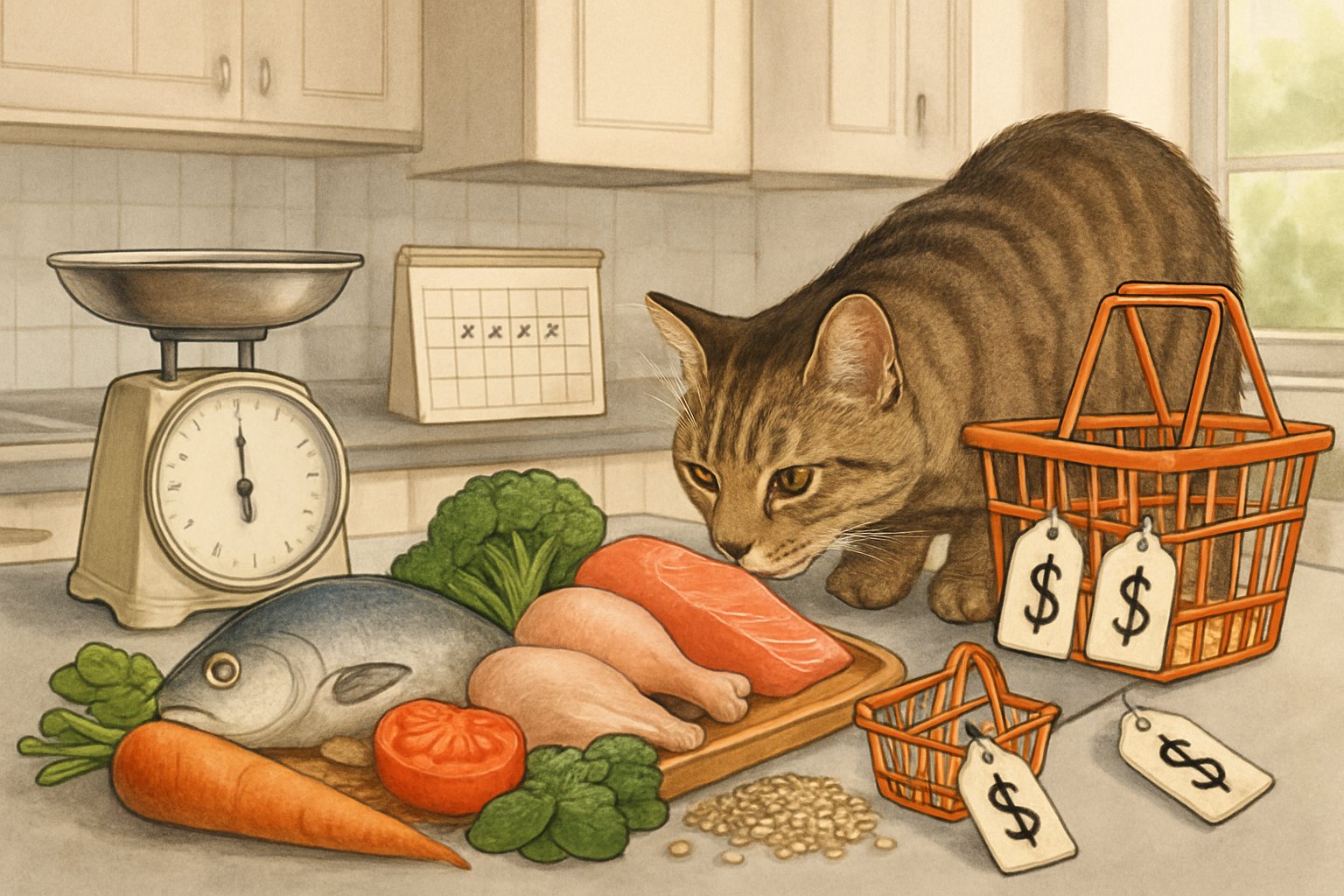
The price of fresh cat food depends mainly on the protein sources and whether your cat needs special nutrition. Premium ingredients and custom formulations cost more but deliver better health benefits.
Ingredient Quality and High-Quality Protein
I’ve found that high-quality protein makes the biggest difference in fresh cat food pricing. Human-grade chicken, salmon, and turkey cost significantly more than meat by-products or fillers.
Fresh cat food companies use whole muscle meat as their first ingredient. This drives up costs but provides complete amino acid profiles that cats need. Cheaper alternatives use meat meals or poultry by-products instead.
The protein percentage also affects pricing. Foods with 40-50% protein content cost more than those with 25-30%. I pay extra for this because cats are obligate carnivores who thrive on protein-rich diets.
Premium cat food often includes multiple protein sources like deboned chicken plus salmon meal. This variety costs more but prevents food sensitivities and keeps meals interesting for picky eaters.
Organic and grass-fed proteins push prices even higher. While not always necessary, these options appeal to health-conscious pet owners who want the cleanest ingredients possible.
Nutritional Value and Special Dietary Needs
When my cat needs special dietary needs, I expect to pay premium prices for targeted nutrition. Prescription diets for kidney disease, diabetes, or food allergies cost 2-3 times more than regular fresh food.
Pet nutrition companies invest heavily in research to create these specialized formulas. They work with veterinary nutritionists to balance minerals, vitamins, and calories for specific health conditions.
Limited ingredient diets for cats with sensitivities also command higher prices. These foods eliminate common allergens like chicken, beef, or grains while maintaining complete nutritional value.
Senior cat formulas include joint supplements and adjusted protein levels. I pay more for these because they address age-related health changes before problems develop.
Kitten formulas require higher calories and specific nutrients for growth. The increased nutrient density and specialized ingredients justify the premium pricing compared to adult maintenance diets.
Fresh Cat Food vs. Traditional Cat Food: Value Beyond Price
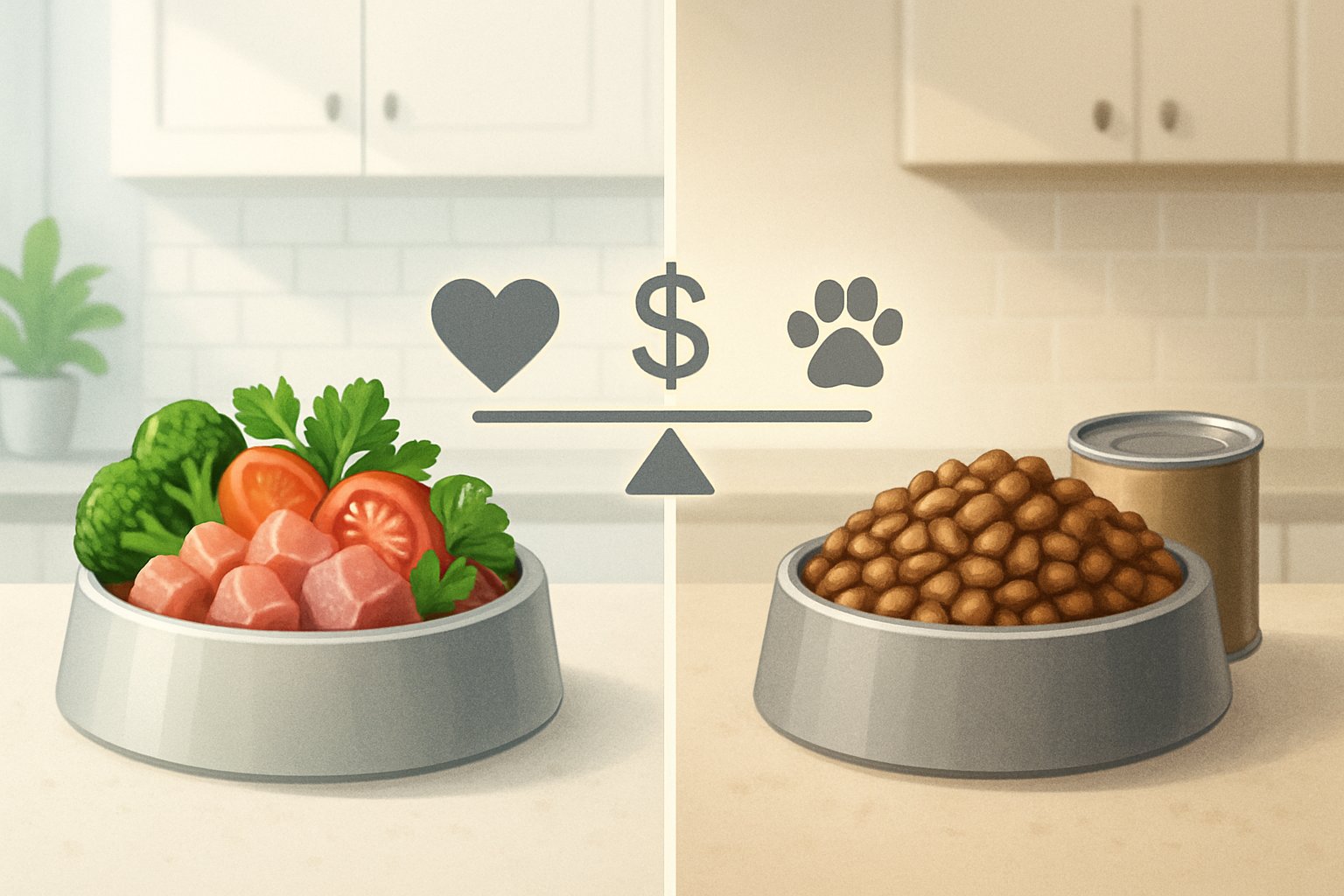
When I compare fresh cat food to traditional options, the price tag tells only part of the story. The real difference lies in ingredient quality, nutritional density, and potential long-term health benefits that could impact your wallet years down the road.
Benefits and Trade-Offs of Fresh Food
Let me be honest—fresh cat food costs more upfront, but there’s a reason why.
Fresh food typically contains:
- Whole proteins like deboned chicken or fish (not meat meal)
- No fillers like corn or wheat that bulk up dry cat food
- Higher moisture content compared to traditional dry kibble
- Minimal processing that preserves nutrients
I’ve noticed that premium cat food uses fresh meat instead of meat meal, which explains the price difference. When you’re paying $3-4 per day for fresh food versus $0.50 for dry cat food, you’re essentially paying for human-grade ingredients.
The trade-off? Your budget takes a bigger hit monthly. But here’s what I find interesting—cats often eat less fresh food because it’s more nutrient-dense.
Storage becomes trickier too:
- Fresh food requires refrigeration
- Shorter shelf life than dry kibble
- More meal prep time
Wet cat food sits somewhere in the middle, offering better hydration than dry food without the premium price of fresh options.
Long-Term Health and Vet Bill Considerations
Here’s where the math gets interesting for your wallet.
I’ve seen cats on fresh diets experience fewer digestive issues, better coat condition, and improved hydration. While commercial vs homemade cat diets can incur significant additional costs initially, the potential vet savings matter.
Common issues that expensive diets might help prevent:
- Urinary tract problems (more common with dry cat food)
- Obesity from filler ingredients
- Digestive sensitivities
- Dental issues
Think about it—one urinary blockage surgery can cost $3,000-5,000. If better nutrition prevents just one major health episode, the premium cat food pays for itself.
The reality check: Not every cat needs fresh food. Some thrive on high-quality wet cat food or premium dry kibble.
I recommend calculating your annual cat food cost including potential vet bills. A $100 monthly food budget might seem steep, but it’s cheaper than emergency vet visits down the road.
How to Find the Best Value (Without Compromising Nutrition)
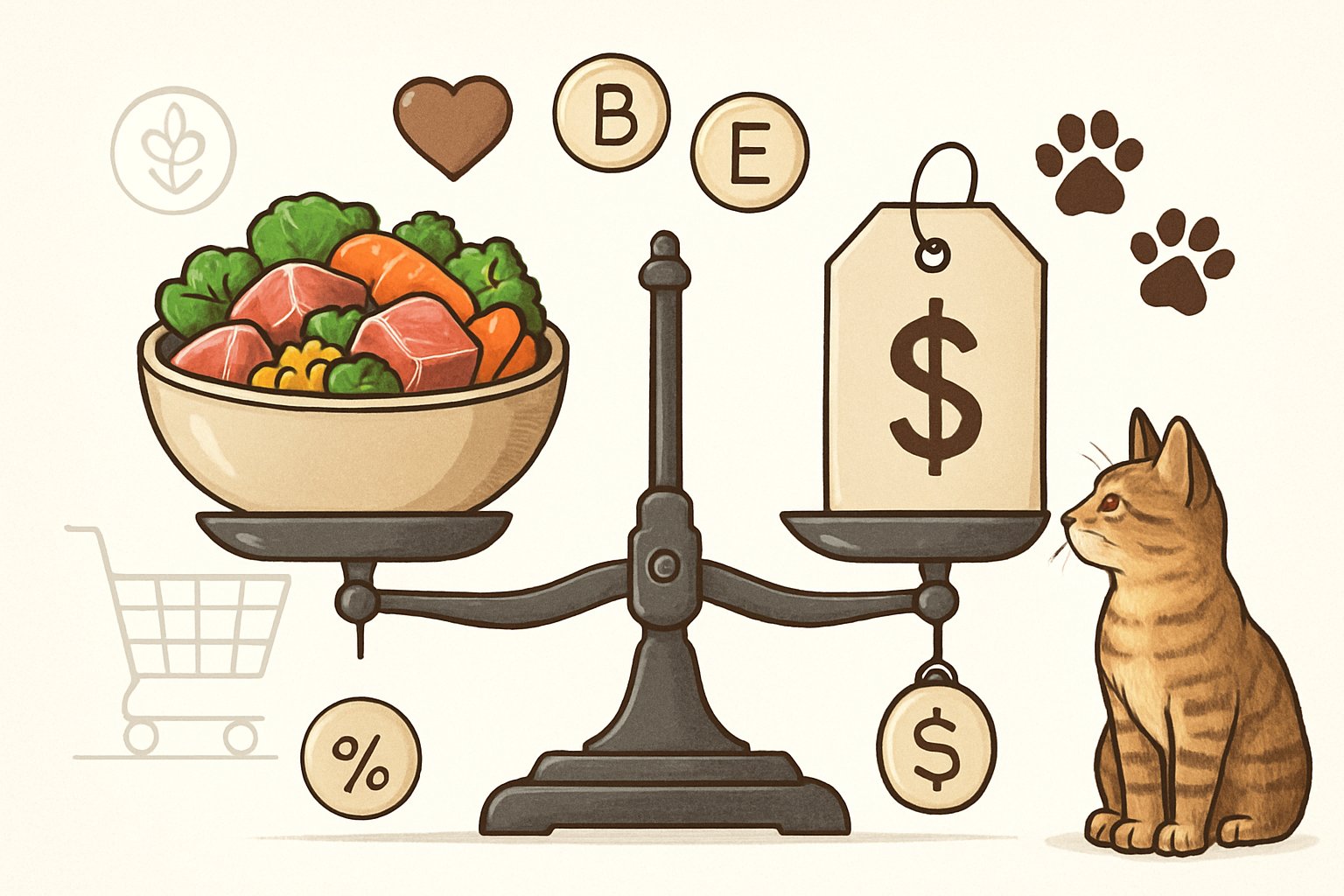
Finding the best value in fresh cat food means balancing cost with quality nutrition. Smart shopping strategies and combining different food types can help you feed your cat well without breaking your budget.
Tips to Save on Fresh Cat Food
Let me be real with you – fresh cat food can hit your wallet hard. But I’ve learned some tricks that keep my cat healthy without draining my bank account.
Buy in bulk when possible. Many fresh cat food brands offer discounts for larger orders. If you have freezer space, stock up during sales.
Sign up for subscription services. Cat food delivery services often provide 10-15% discounts for recurring orders. You’ll also save on shipping costs and never run out of food.
Look for lesser-known brands with solid reputations. While Purina and Royal Canin are household names, smaller companies sometimes offer better value. Check the ingredient list and nutritional information rather than just the brand name.
Time your purchases strategically. Many retailers offer sales during holidays or end-of-quarter periods. I mark my calendar for these times and stock up.
Consider store brands from reputable pet retailers. These often match the quality of name brands at lower prices. Pet owners prioritize health and nutrition above price, but you don’t have to choose one over the other.
Mixing and Matching Food Types for Budget-Smart Feeding
You don’t have to feed fresh food for every meal to give your cat great nutrition. I’ve found that mixing different food types creates a balanced approach that’s easier on my budget.
Use the 80/20 rule. Feed high-quality dry food for 80% of meals and fresh food for 20%. This gives your cat variety while keeping costs manageable.
Supplement dry food with fresh toppers. Add small amounts of fresh food to regular kibble. Your cat gets the benefits without the full cost of complete fresh meals.
Rotate between brands and types. Mix premium dry food, quality wet food, and occasional fresh meals. This prevents your cat from getting bored while spreading costs across different price points.
Make strategic homemade additions. Simple cooked chicken or fish can supplement commercial food. Just make sure any homemade cat food meets nutritional needs and doesn’t replace balanced commercial diets entirely.
Track what works best for your cat’s health and your budget. Some cats thrive on mixed diets while others need consistency.
Frequently Asked Questions
Fresh cat food costs can really add up, but understanding what you’re paying for helps you make smart choices. Let me break down the most common questions I hear about pricing for premium feline nutrition.
Ever wondered how much you might be shelling out monthly for that high-quality, fresh feline feast?
I get this question all the time, and honestly, it depends on your cat’s size and appetite. Most cat owners spend between $40 to $120 per month on fresh cat food.
For a typical 10-pound indoor cat, you’re looking at roughly $2 to $4 per day for fresh food. That works out to about $60 to $120 monthly for most households.
Larger cats or multi-cat families will push that number higher. I’ve seen some families with three cats spend upwards of $200 monthly on fresh food alone.
The math gets easier when you break it down per meal. Fresh cat food typically costs $1 to $2 per serving, compared to $0.25 to $0.50 for traditional kibble.
What’s the real deal behind those ‘premium’ fresh cat food price tags – are they worth the extra scratch?
Let me be real with you – premium fresh cat food costs more because of what goes into it. You’re paying for human-grade ingredients, minimal processing, and no preservatives.
Fresh food companies use whole meats, vegetables, and fruits instead of meat meals or by-products. This drives up costs significantly but delivers better nutrition.
The price reflects cold-chain storage and shipping too. Keeping food fresh from kitchen to your door isn’t cheap.
Many cat owners see improvements in their pet’s coat, energy, and digestion within weeks. Pet owners prioritize health and nutrition over price when choosing food, according to research.
I think it’s worth it if your budget allows, especially for cats with health issues or food sensitivities.
Got a minute? Let’s talk about the cost-effectiveness of making your own cat food at home – savings or just a hassle?
Making homemade cat food can save you money, but it’s not as straightforward as you might think. I’ve calculated the costs, and homemade typically runs $1.50 to $2.50 per day for a 10-pound cat.
You’ll spend time shopping for ingredients, prepping meals, and ensuring nutritional balance. That’s where many people stumble.
The real cost comes from nutritional supplements. Cats need taurine, vitamins, and minerals that you can’t get from basic ingredients alone.
I recommend consulting a veterinary nutritionist first. Their fee ($200 to $400) seems steep, but it prevents costly health problems later.
Raw ingredients for a week typically cost $15 to $25, plus supplements at $20 to $30 monthly. Your time investment is significant though.
You know that look your cat gives you when you’re dishing out dinner? But let’s dig in, how does the cost of small-batch, locally-sourced cat food stack up?
Small-batch, locally-sourced cat food hits your wallet harder than mass-produced options. I’ve found these boutique brands cost $3 to $6 per day for an average cat.
Local producers have higher overhead costs and smaller production runs. They can’t achieve the economies of scale that big pet food companies enjoy.
You’re paying a premium for freshness and supporting local businesses. Many of these foods are made weekly rather than stored for months.
Quality control is typically tighter with small batches. I’ve noticed fewer recalls and quality issues with these brands.
The trade-off is price. Monthly costs can reach $150 to $180 for one cat, which puts it out of reach for many families.
Freshpet cat food seems to be all the buzz at the dog park lately, but what’s the hit to your wallet for such convenience?
Freshpet is definitely convenient since you can grab it at most grocery stores. The cost runs about $2 to $3 per day for a typical house cat.
A 1-pound bag costs around $4 to $6 and feeds most cats for 2-3 days. Monthly expenses typically fall between $60 to $90 for one cat.
The convenience factor adds to the cost. You’re paying for refrigerated distribution and widespread retail availability.
I find Freshpet sits in the middle ground between kibble and premium fresh delivery services. It’s fresher than dry food but not as customized as subscription services.
Storage is easy since it fits in your regular fridge. No special freezer space required like some other fresh options.
Thinking about a fresh cat food subscription service? Here’s what can you expect to invest in your kitty’s gourmet meal plan.
Subscription services typically cost $50 to $150 monthly depending on your cat’s needs and the brand you choose. I’ve tried several and here’s what I’ve learned.
Most services charge $2 to $5 per meal, with discounts for larger orders or longer subscriptions. Shipping is usually free but built into the price.
You’ll pay more for customization. Services that tailor recipes to your cat’s age, weight, and health conditions charge premium prices.
Convenience costs extra too. Pre-portioned meals and automatic delivery add $10 to $20 monthly compared to buying in bulk.
The math works best for single-cat households. Multi-cat families often find the costs add up quickly, sometimes reaching $300 to $400 monthly for three cats.



Leave a Reply